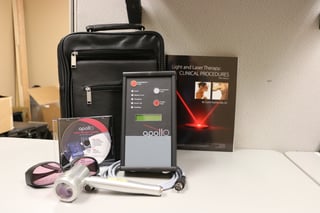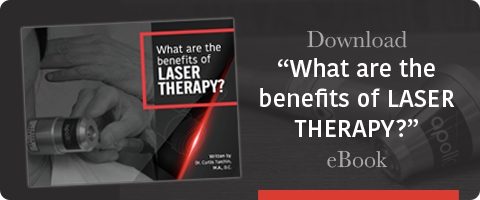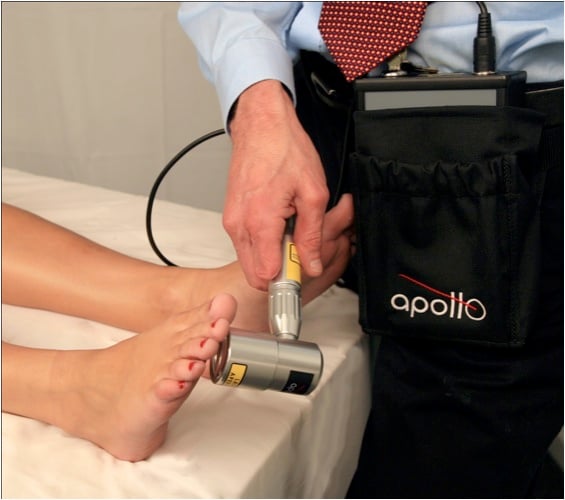As low-level laser therapy becomes more commonly offered in physical therapy, pain management and chiropractic practices, health care practitioners are finding that the modality may be applied to a wide variety of patient cases. Consider, for example, post-surgical pain and wounds. Low-level laser therapy goes beyond the therapeutic and chronic pain management setting to not only reduce pain after surgery but to help speed healing.
How Does Laser Therapy Work?
Research has demonstrated that low-level laser therapy immediately lowers pain levels to a significant degree, since the action of the laser works to sedate nerves that are in a hyperirritable state (continually firing). Laser can also shift the patient into a parasympathetic mode (a mode of the nervous system that typically occurs when we are relaxing, sleeping, eating, etc.). This can potentiate an improvement in healing.
Laser therapy can also help reduce pain due to its secondary ability to regenerate damaged nerves. As an added bonus, it is able to stimulate regeneration of all connective tissues, including bones, muscles, tendons and ligaments.
Post-Surgical Laser Therapy
Due to laser’s inherent characteristics, it is thus an effective treatment for post-surgical patients. Research meta-analysis of past studies on laser therapy and wound healing has concluded that laser therapy for chronic or post-surgical wounds results in dramatically faster healing than with other modalities.
Research has also shown that when used alongside pain medications, laser therapy can help reduce a patient’s reliance on these medications—and the likelihood of any side effects—by improving the medication’s effectiveness.
While laser can be used in nearly any post-surgical case, it can be highly effective in treating patients after total hip, knee, ankle or shoulder replacement surgery. These orthopedic surgeries create deep wounds into these joints and can take weeks or months to heal. Laser therapy effectively penetrates several inches into the body, helping to relieve painful wounds and speeding healing.
Over the past 30 years, low-level laser therapy has and is continuing to demonstrate its effectiveness in multiple fields. Today’s physical therapy practices, veterinary offices, dental offices, chiropractic clinics and hospitals should take note of ongoing research and evidence-based practice of this tool and its applications in treating pain—whether acute, chronic or post-surgical.
Topics

Curtis is an internationally known expert in the field of laser therapy and author of "Light and Laser Therapy: Clinical Procedures," the authoratative text on clinical laser treatment. He has used lasers for 27 years, is the author of four books and more than 20 journal articles, and has lectured at many chiropractic colleges and state associations. He also studied various types of soft-tissue therapy with Janet Travell, MD; David Simons, MD; and Karel Lewit, MD.




